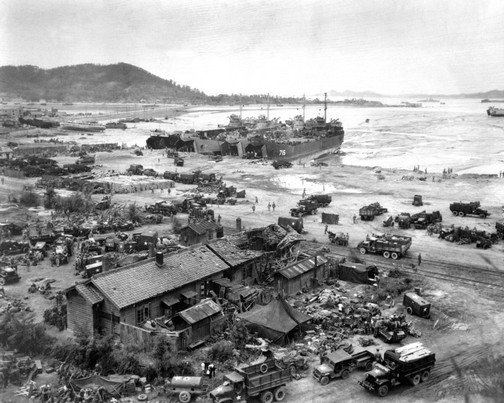Operation Chromite: A Strategic Analysis
Published by A. Gagaridis in Update · 12 November 2017
Tags: Korea, War, Chromite, Inchon, Strategy, Analysis, 1950
Tags: Korea, War, Chromite, Inchon, Strategy, Analysis, 1950

Welcome back!
Today, the situation in the Korean peninsula is at the centre of the international security agenda, because of Pyongyang's insistance in its quest for nuclear weapons. But the underlying problem is more profound, and it dates back to 1945, when Korea was divided in two occupation zones (Soviet in the north, Allied in the south) that evolved in two independent states. In 1950, North Korea's attack against the South sparked a bitter war that lasted until 1953, when an armistice (but not a peace treaty) was signed; thus determining the separation of Korea that still persists today.
But maybe the peninsula would be united under the communist regime if an audacious landing at Inchon officially known as Operation Chromite hadn't suceeded in August 1950. It forced the North Korean forces to fall back, and only the later Chinese intervention saved Pyongyang from being defeated and re-established the status quo.
If you want to know more about this important episode in contemporary military history and understand how it influenced the current situation in Korea, click here and read my strategic analysis on Operation Chromite!
Note: I wrote it as part of the course in "Strategy and International Security" that I attended during my Master's program at UCL. So, it is an academic work in styile, but it represents a relevant application of theoretical strategic principles to a real military operation.
There are no reviews yet.

